One of the most common complaints I hear from women in my yoga classes is about pain and tightness in their upper back, shoulders, and neck.
And it’s no wonder why — we are constantly bending over children, hunched over our computers, and generally a bit stressed.
That tension is frequently carried in our upper body.
So, as you read this, take a deep breath — exhale — and drop your shoulders away from your ears.
Ahhh.
As a mom of littles and having a job that is primarily computer-based, I’m no stranger to upper body tension.
And as a certified yoga instructor, I have taught and personally practiced many techniques on how to ease that tension.
Here are some simple yoga poses to help.
4 Yoga Poses for Upper Body Tension Release
1. Cactus Arms
Tight chest muscles pull your shoulders forward, creating tension in your neck and back. Releasing those muscles allows your shoulders to fall into a more neutral position, creating better posture and less tension.
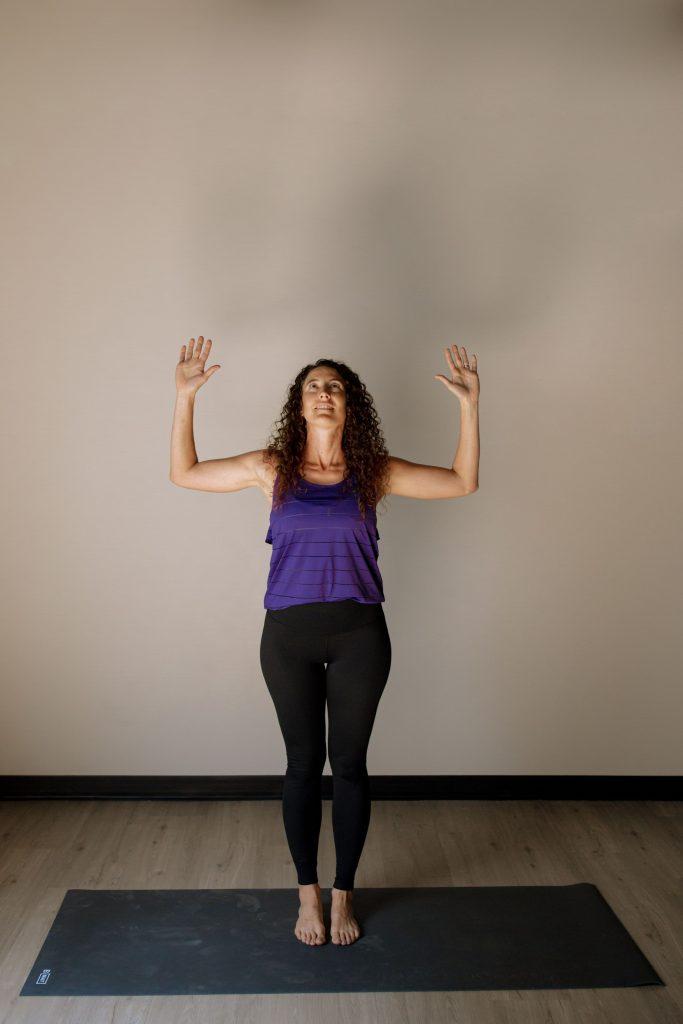
How to do this pose:
- Stand tall with hands at your sides.
- Swoop hands and arms over head as you inhale.
- Exhale as you drop your elbows down and slightly back.
- Gaze at the ceiling and slightly lift your chest.
You should look like a giant cactus.
- Hold for 15-30 seconds and release, then repeat 1-2 times (Option to drop your elbows down and back for a deeper stretch.)
2. Low Lunge
Everything in our body is connected. Our hips are this central connection point. Stretching your hips will create a ripple effect all the way up your body.
Personally, if I notice a tension headache coming on, as soon as possible I practice a low lunge pose to stretch my front hip flexors. I can often stop the headache before it starts.
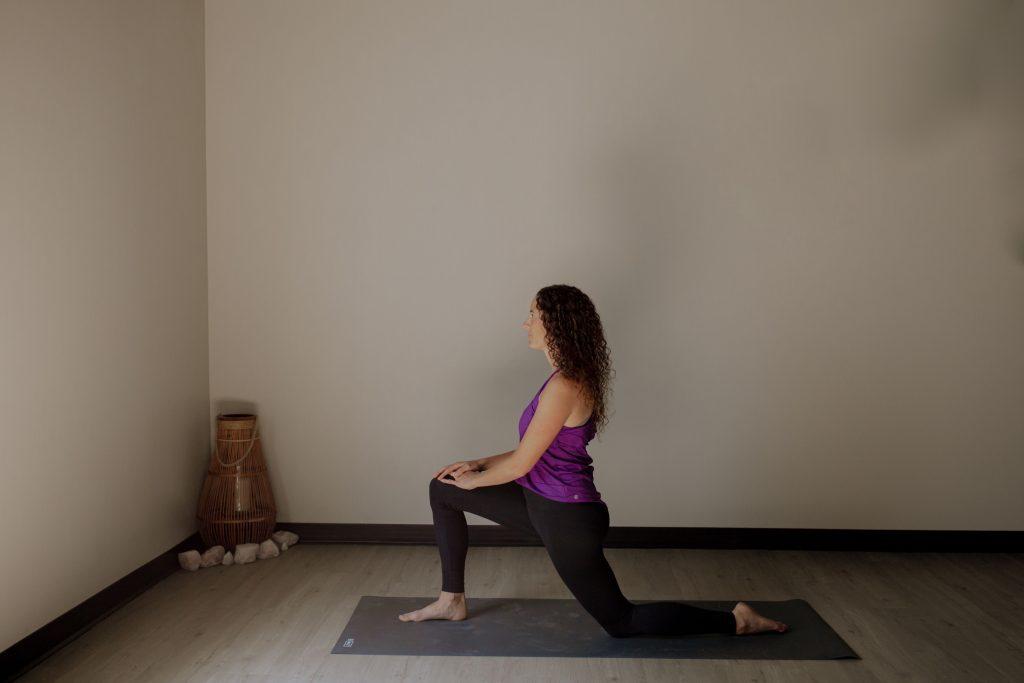
How to do this pose:
- Step forward with your right foot.
- Drop your left knee to the floor.
- Hands rest on your right thigh as you gently shift your hips forward until you feel the front of your left hip start to stretch.
- Hold here for 15-30 seconds and repeat 2-3 times each side.
For an extra stretch, shift your back foot out to the side just an inch or so. You will feel your hip flexor stretch in a bit of a different area.
3. Neck Rotation
This little series helps loosen tight neck and shoulder muscles and often can help with tension headaches.
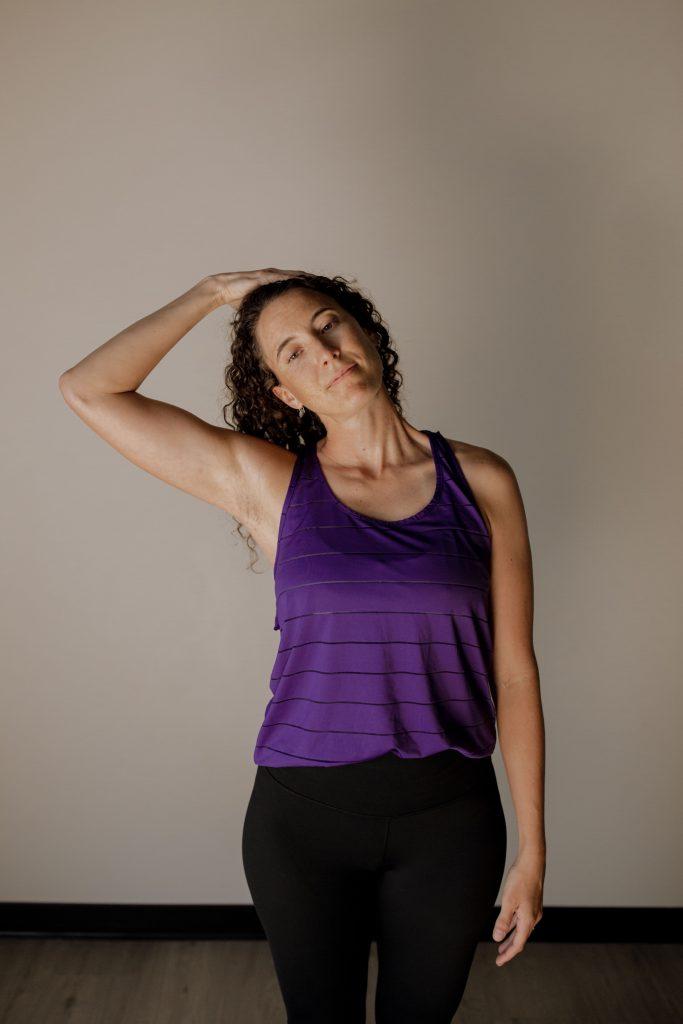
How to do this pose:
- Start seated or standing with your spine and legs in a neutral position.
- Drop your right ear toward your right shoulder.
- Hold for 10 seconds. (You can use your hand to apply some gentle pressure for a little extra stretch.)
- Staying in that ear to shoulder position, begin to rotate your nose toward your shoulder. Notice the shift in your stretch in your neck.
- Hold for 10 seconds.
- To release and reverse, slowly rotate your chin to your chest.
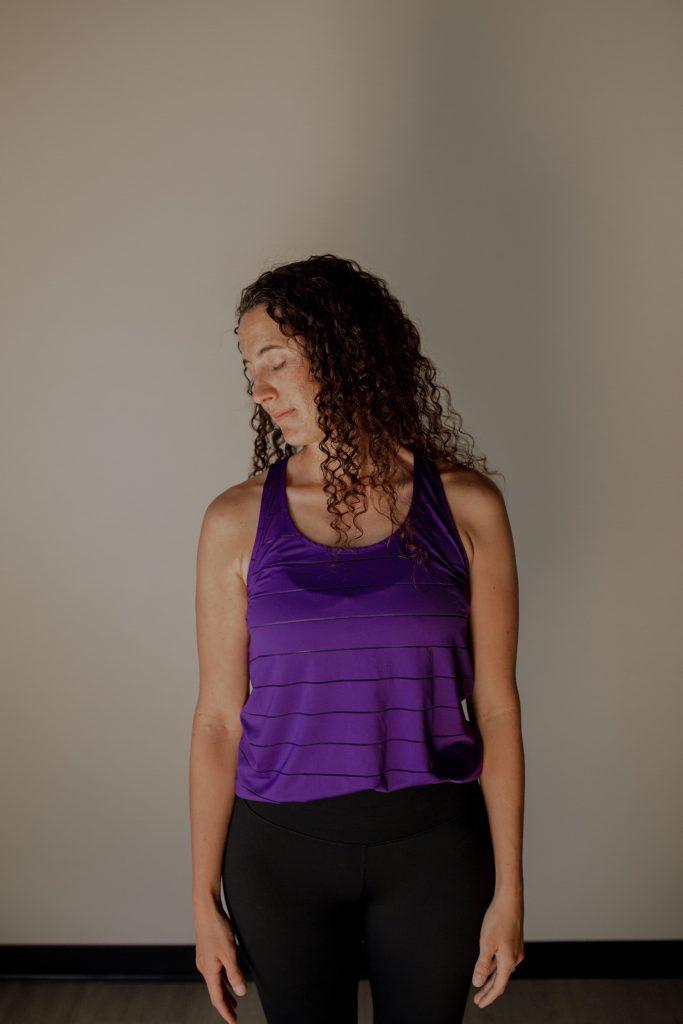
If you’d like to deepen this stretch, clasp your hands behind your head and let the gentle weight of your hands deepen the stretch. Don’t pull down.
- Repeat stretch on the opposite side by rotating left ear to left shoulder.
- Hold for 10 seconds.
- Rotate your nose toward your shoulder.
- Hold for 10 seconds.
- Release and slowly rotate your head in circles gently.
4. Eagle Arms
Not only is this yoga pose great for stretching your upper back and shoulders, it is also a great mental stress releaser.
How to do this pose:
- Standing tall with hands at your sides, bring your right forearm in front of you parallel to your chest and face.
- Bring your left arm underneath your right with the back of your hands working to touch. If you have the flexibility, wrap your wrists around each other so palms touch.
- Slightly push elbows forward then draw them up. Notice the stretch along your vertebrae and shoulder blades.
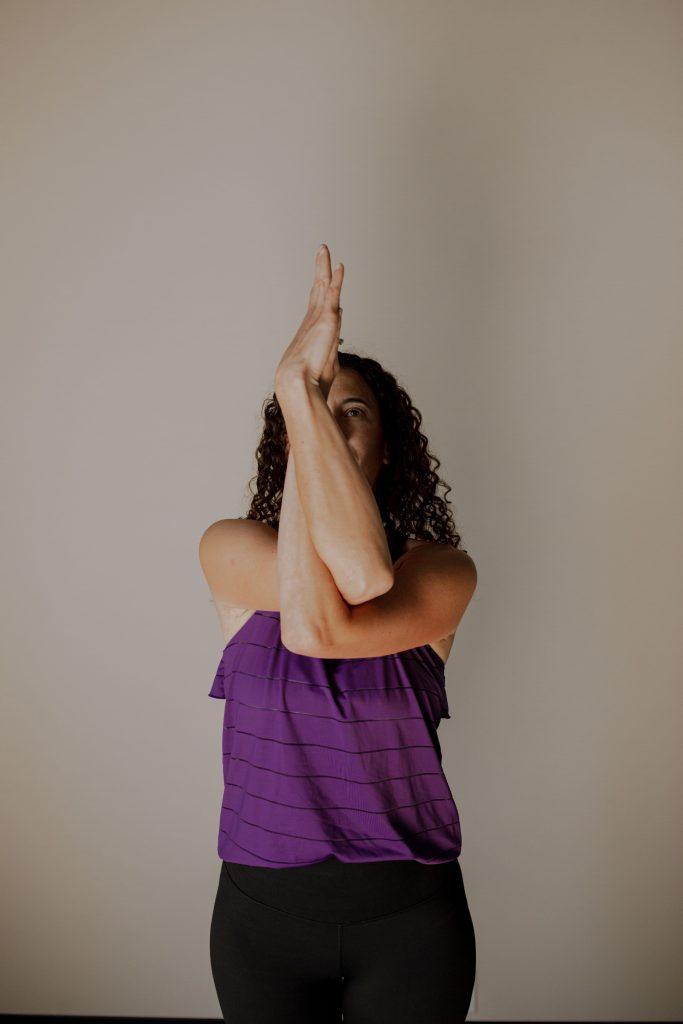
Feel free to incorporate some up and down rocking movement of your arms to shift that stretch in a way that feels comfortable and helpful to you. You can even fold forward at your hips for a new stretch.
- Hold for 15-30 seconds.
- Take a big inhale then exhale out your mouth as you release your arms in one big swooping motion.
- Wiggle everything out as you feel stress evaporate from your body.
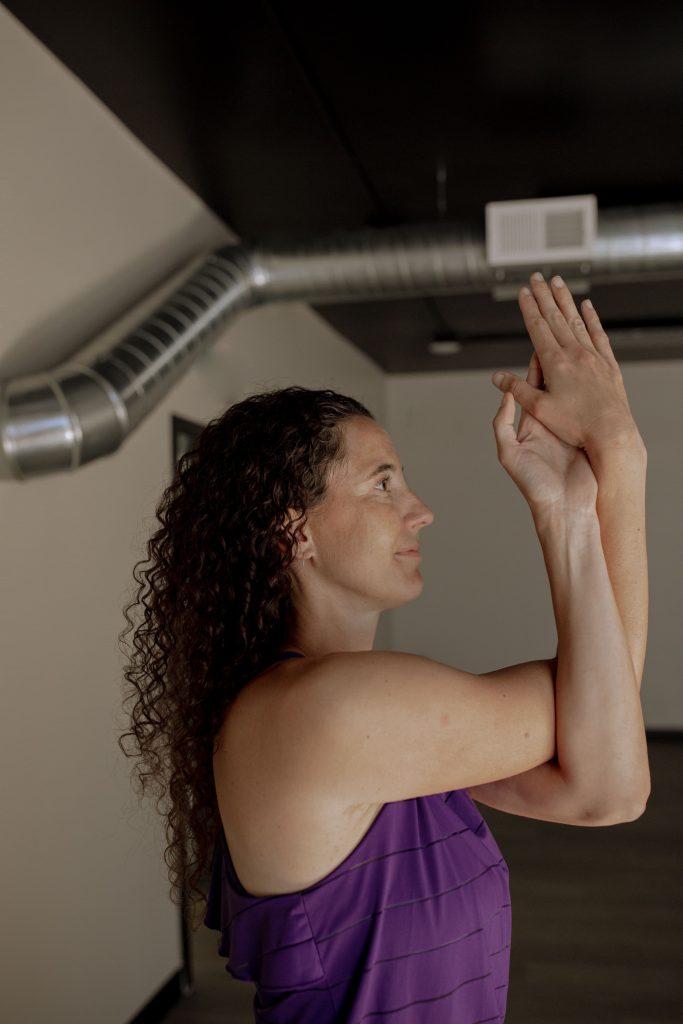
These four stretches will often provide you some instant relief, but doing them frequently (a few times a week or even daily) will often help prevent that tightness and pain from even starting.
3 Helpful Stretching Tips
- Take deep slow breaths as you hold each stretch. Inhale through your nose; exhale out your nose or mouth, whichever feels best to you.
- Take five minutes in a quiet room and make a commitment to dedicate that as stretch time. Doing these stretches while multitasking isn’t very effective at allowing your muscles to truly relax and release. And, often you will end up not holding the stretches as long as you need.
- After your short stretch session, take a light walk around your house or office allowing your arms to naturally swing by your sides. This helps bring some blood flow to your muscles and allows muscles strands to lengthen, loosen, and hold their more relaxed state.
Taking five minutes for these four stretches is well worth the lightness and ease that will return to your upper body!
















